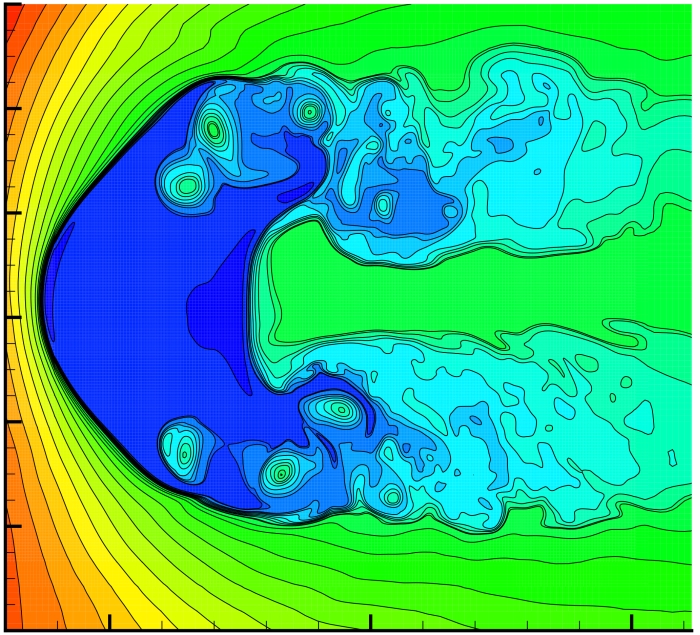Astronomers Have Discovered Why The Solar System Might Be Shaped Like a Croissant
Wind and radiation which comes from the the Sun stream outwards, pushing out into interstellar space. It produces a Border of solar effect, within which the objects in the Solar method are protected from strong cosmic radiation. This is known as the heliosphere, and understanding how it works is an very most part of understanding our Solar System, and may be even how we, and all life on Earth, are capable to be here.
Astrophysicist James Drake of the University of Maryland said that- "How is this relevant for society? The bubble that arounds us, created by the Sun, offer defense from galactic cosmic rays, and the form Or shape of it may cause how those rays get into the heliosphere". There's large amount of analysis but, of course, the method that galactic cosmic rays can get in can be affected by the structure of the heliosphere – does it have wrinkles and folds and that sort of thing?. Since we're interior the heliosphere, and it's border is not practically visual, determine its form is not correctly easy . But it's not difficult. The two Voyager probes and New Horizons are three spacecraft which have traveled to the long distance reaches of the Solar method; in reality, the Voyager probes have even traversed the border of the heliosphere, and are recently producing their route through interstellar space. With information from these probes, researchers find out last year that the heliosphere could be shaped a bit like a weird cosmic croissant. Now, they have determined how: neutral hydrogen particles streaming into the Solar System from interstellar space likely play a crucial part in casting Or carving the form of the heliosphere.
The scientists group set out to proposed the heliospheric jets. These are twice jets of compound that originated from the Sun's poles, shaped by the interaction of the solar magnetic field and with the interstellar magnetic field. Rather than shooting straight out, though, they curve around, pushed by the interstellar flow – like the points of a croissant. These are the Solar System's tails.
A reconstruction of the heliosphere showing the jets.
It is equal to other astrophysical jets analysis in space, and like those other jets, the Sun's jets are unsteady. And the heliosphere, shaped by the Sun, also appears to be unstable. The researchers wanted to know why. "We see these jets projecting as Discontinously columns, and astrophysicists have been surprising for years why these shapes present instabilities," explains astrophysicist Merav Opher of Boston University (BU), who led the research.
The group of Reserchers proposed computational momodeling aiming on neutral hydrogen atoms which that have no charge. We know that these stream through the Universe, but not what impact they could have on the heliosphere. When the scientists took the neutral atoms out of their model, Gradually the solar jets became constant. Then they put them back.
Opher said that - "When I put them back in, things start bending, the center axis starts wiggling, and that means that something inside the heliospheric jets is becoming very unstable". By this the team's, observed this occurs because of the interaction of the neutral hydrogen with the ionized matter in the heliosheath -the outer part of the heliosphere. This creates a Rayleigh-Taylor instability, or an instability that produces at the interface between two fluids of different densities when the lighter fluid pushes into the heavier one. In turn, this creates big-scale turbulence in the tails of the heliosphere.
Above the aparent and attractive description for the shape or form of the heliosphere, and one which could have suggestions for our understanding of the method galactic cosmic rays enter the Solar System. In turn, this could help us to better understand the radiation environment of the Solar System, outside Earth's protective magnetic field and atmosphere. "The Universe is not quiet. Our BU model doesn't try to cut out the chaos, which has allowed me to pinpoint the cause (of the heliosphere's instability). The neutral hydrogen particles," Opher says.
"This analysis is actually main breakthrough, it's really set us in a direction of investing why our model gets its distinct croissant-shaped heliosphere and why other models don't". The study has been published in The Astrophysical Journal.



